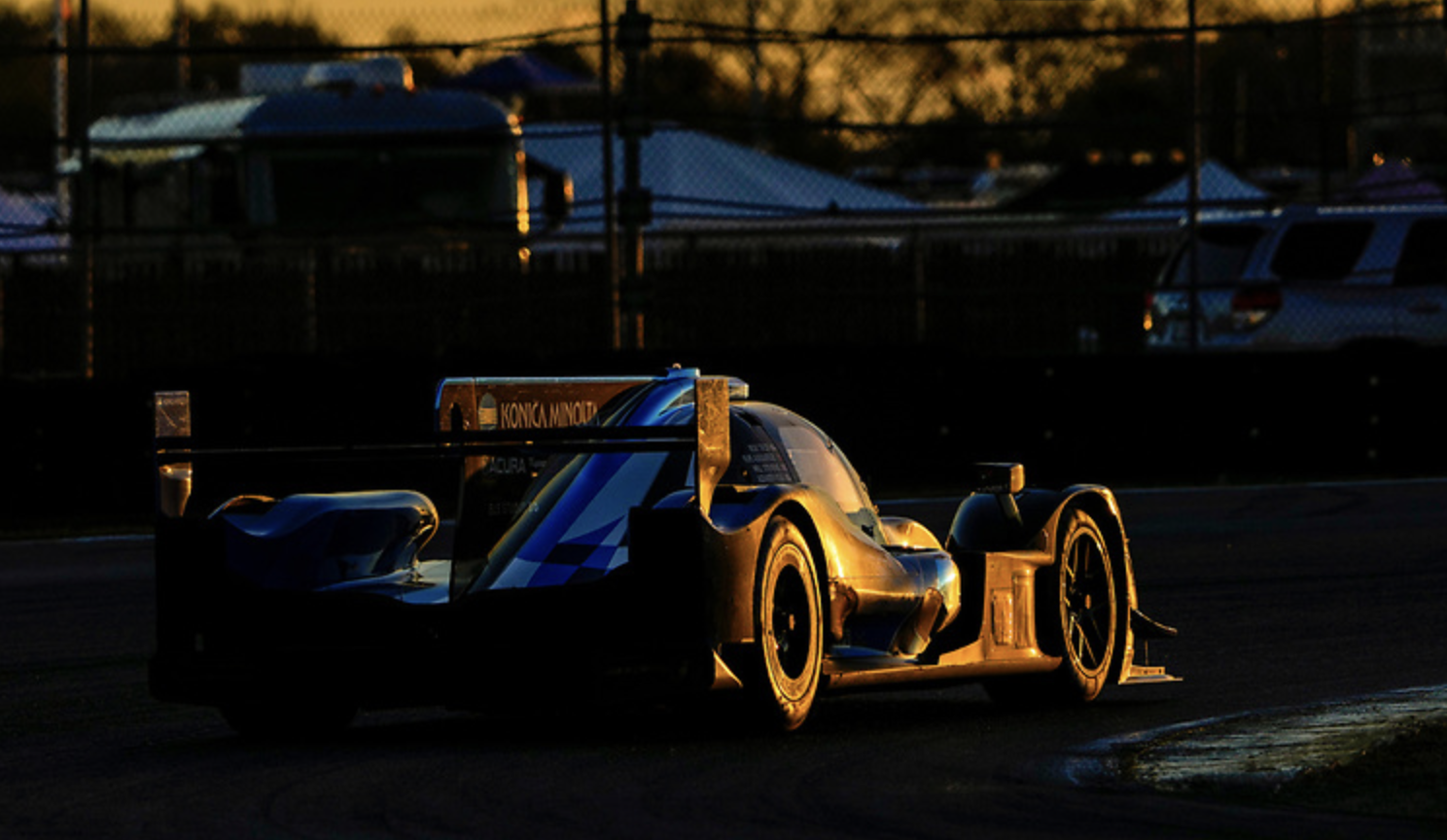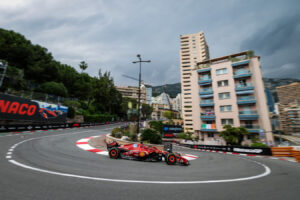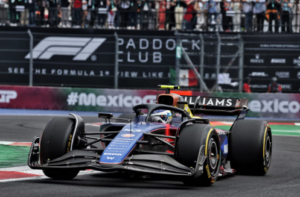North America has a very rich racing history, but NASCAR, IndyCar, and NHRA have always dominated the scene. But in 2023 IMSA, the premier sportscar series in North America, is looking to make some waves.
Formerly known as the American Le Mans Series, American sportscar racing has been around since the 60s. Playing host to the iconic 24 Hours of Daytona put the states on the map for sportscars and domestic manufacturers like Ford and IMSA a part of the modern American motorsport landscape.
In the modern day, IMSA is the governing body for most sportscar racing in the States and under its umbrella sit seven different championships. The premier series under the IMSA banner is the WeatherTech Sportscar Championship. The Michelin Pilot Challenge is the closest feeder for the WeatherTech Championship. Under those two run five other series that make up the feeder ladder for the WeatherTech Championship.
The Calendar
The WeatherTech Championship has a few separate titles within the series that teams can compete for, including the Sprint Cup and Endurance Cup. Sprint races are typically 2 hours and 40 minutes, with 1-2 driver changes along with a few pit stops.
Sprint races make up a majority of the calendar, but the true legacy of sportscar racing comes with the endurance events. There are four endurance races on the IMSA calendar, the season-opening 24 Hours of Daytona, the 12 Hours of Sebring, Six Hours of The Glen, and the season finale at the 10-hour-long Petit Le Mans.
The 24 Hours of Daytona is the series’ flagship race and has been run in some capacity for the last 60 years. Sebring has also been on the calendar since the ’60s and for the last few years has played host to both IMSA and IMSA’s European counterpart WEC on the same weekend. Sprint races require additions to the driver lineups allowing more stars of the racing world to come out and race in a one-off capacity.
IMSA is made up of five distinct classes of cars, and not every type of car is run in every race. Some races will only feature certain classes and a few races every year are GT only. All five classes race in each endurance race as well as a few significant sprint weekends like the June sprints at Road America and the brand-new race in September at Indianapolis Motor Speedway.
Class Structure
The most unique thing about IMSA is its class structure. The easiest way for new fans to understand it is to imagine five separate series all running their races on track at the same time. Each class has different rules and regulations with respect to car make, model, and driver.
There are two types of teams in sportscar racing, customer and factory. Customer teams are funded by either a large sponsor or what is known as a “Gentleman Driver”. Gentleman Drivers are drivers that are wealthy from something other than racing that spends a lot of money to buy and maintain a car from a manufacturer, as well as the team and logistics to race it.
Factory teams are race teams funded and usually operated directly by a manufacturer. These entries serve as a way for manufacturers to advertise their race cars to prospective customers. It also allows them to test and develop technology to be used in road cars. The direct competition between popular road car manufactures is some of the original lifeblood of racing from its earliest days and that mindset is alive and well in the world of sportscar racing today.
LMP2, LMP3, and GTD
Unlike IndyCar, Formula 1, or NASCAR, drivers in sportscar series share a team’s car. Each team is required to use at least two drivers for the sprint races and depending on the length of the race, three to four drivers for endurance races. Three classes on the grid, LMP2, LMP3, and GTD require some level of an amateur driver in the lineup. The distinction of driver skill is based on the FIA driver ranking. The FIA categorizes drivers into four classes from Platinum to Bronze depending on skill and experience.
The two GT classes on the grid are known as GTD and GTD Pro. Both cars race identical spec cars in terms of mechanical regulations, but the major distinction between the two is the driver line-ups. To compete in GTD you have to have one amateur-ranked driver in the lineup alongside one pro-ranked driver. In GTD Pro you can have all professional drivers. The same applies to LMP2 and LMP3, where each lineup has to feature both types of driver.
LMP2 and LMP3 are Pro-Am prototype classes. Manufacturers such as Oreca and Ligier sell customer cars to buyers that make up the often sparse LMP2 and LMP3 fields. Similar to GTD, the fields are almost entirely customer entries as opposed to factory efforts.
In 2023, the top class of the WeatherTech Championship is debuting some very hotly anticipated regulation changes. Evolving from the former DPi regulations, the GTP class will feature hybrid engines that align closely with the LMDh spec that recently debuted in the WEC.
GTP teams will be made of all pro drivers and factory teams will typically be the ones fighting for the overall victory in each race.
A New Golden Age
At a glance, IMSA and any other multi-class sportscar series are not the most easily digestible things in the world. But once you get over a few learning hurdles of the series, you are in for a rich and exciting style of racing that is truly one of a kind. On any given weekend, IMSA produces some of the most thrilling racing, featuring close battles and exciting finishes. 24, 12, 10, or six-hour races might seem daunting but once viewers flip it on it is hard to turn it off.
2023 is the best year for any new fan to get on the sportscar bandwagon for a variety of reasons. Most notably, 2023 is the first year of what’s being touted as a “New Golden Age” for the sport. Years of work has gone into creating technical homologation between IMSA and its European counterpart WEC that will allow cars in the top class of each series to compete in events on either side of the Atlantic with very little barrier to entry either way. This promise of convergence is something that longtime fans have only dreamt of and in 2023, it is finally coming true.
The Big Picture
With the promise of what’s to come in 2023, many manufacturers have allocated resources to bolster existing sportscar programs or start new factory efforts from the ground up. This has brought the return of Porsche, Ferrari, and BMW to top-class competition in 2023 as well as garnered talk from McLaren, Lamborghini, and others to join in the years to come.
With all this buzz around sportscars, drivers have begun signing factory or development driver deals with teams to get their foot in the door on this new age of racing as well.
Teams like Chip Ganassi Racing, Meyer Shank Racing, and Wayne Taylor Racing have all grown their existing programs to capitalize on the new regulations and names like Andretti Autosport have also begun to attach their name and resources to GTP Programs.
The relative accessibility and ability to not race full seasons has enticed many figures in the racing world, teams and drivers alike. And the growth of racing in the states has helped get more and more eyes on the series as a result. 2023 is going to be one of the most important years in IMSA history and the success of this “New Golden Age” will send ripples around the racing world.






